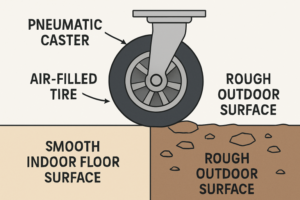Digital transformation has reached every corner of our daily lives, and education is no exception. One of the most recent innovations reshaping school management is the E Hall Pass system. Traditionally, students have used paper slips or written notes to leave the classroom for various reasons—whether it’s visiting the restroom, attending the nurse’s office, or going to another classroom. While this method worked for decades, it came with its share of challenges, such as misuse, lack of accountability, and limited tracking.
The E Hall Pass brings a modern solution to an age-old problem by introducing digital passes that improve transparency, enhance student safety, and give educators greater control over classroom movement. This article will explore the e hall pass in depth, covering its purpose, features, benefits, challenges, implementation strategies, and long-term impact.
What is an E Hall Pass?
An E Hall Pass (Electronic Hall Pass) is a digital system designed to replace traditional paper-based hall passes. Instead of writing a note on paper, a teacher can issue a hall pass through an online platform or mobile application. The student then uses a phone, tablet, or school-issued device to display the pass, which administrators can verify instantly.
The system is typically cloud-based and integrates with school management tools. It records when a student requests a pass, when it is approved, where the student is going, and how long they are outside the classroom. This creates a digital record that improves accountability for both students and staff.
Why Traditional Hall Passes Fall Short
To fully understand the importance of the E Hall Pass, we must first recognize the problems with the traditional approach. Paper passes, while simple, often create more issues than they solve:
- Lack of Tracking – Once a pass is written, there is no way to know if the student actually went to the intended location.
- Misuse and Forgery – Students can alter or duplicate paper passes to spend more time outside the classroom.
- Inconsistent Policies – Different teachers may have different rules for issuing passes, leading to confusion.
- Lost or Damaged Passes – A crumpled or misplaced paper slip often results in disputes.
- Administrative Burden – Teachers waste valuable instructional time writing and managing passes.
The E Hall Pass was developed to solve these problems by introducing real-time monitoring and standardized procedures.
Key Features of an E Hall Pass System
The E Hall Pass platform comes with a variety of features tailored to meet the needs of modern schools:
| Feature | Description |
|---|---|
| Digital Requests | Students request passes online instead of asking verbally or using paper. |
| Time Tracking | Tracks how long a student is outside the classroom. |
| Destination Control | Pass specifies exact locations (restroom, nurse, office, library, etc.). |
| Conflict Prevention | Prevents certain students from meeting in the hallways simultaneously. |
| Administrative Dashboard | Gives school staff a centralized view of all active passes. |
| Data Reporting | Generates reports on student movement trends for school analysis. |
| Integration Options | Can integrate with learning management systems (LMS) and attendance platforms. |
These features not only streamline the pass process but also open up opportunities for better data-driven decision-making.
Benefits of an E Hall Pass
The adoption of E Hall Pass systems has grown rapidly because of the wide range of benefits they offer. Let’s explore these in detail:
1. Enhanced Student Safety
One of the top priorities in any school is ensuring student safety. With digital hall passes, administrators know exactly who is in the hallway, where they are supposed to be, and for how long. This minimizes the chances of students wandering into unsafe or unauthorized areas.
2. Improved Accountability
Since all movements are logged, students are less likely to misuse hall passes. Teachers and administrators can review records to address chronic lateness, extended restroom breaks, or repeated requests during critical instructional times.
3. Conflict Management
Some schools struggle with students using hall passes as opportunities to meet peers for socializing or even bullying. The E Hall Pass system can automatically prevent two students with ongoing conflicts from being out of class at the same time.
4. Data-Driven Insights
Administrators gain access to valuable analytics. For example, if a particular student frequently leaves class for the restroom, the school may investigate whether there are underlying health issues. Similarly, patterns of hallway traffic can help schools adjust policies for smoother operations.
5. Reduced Classroom Disruption
Teachers spend less time writing notes or arguing with students over hall passes. With just a few clicks, they can issue or deny a request, keeping the lesson moving smoothly.
6. Environmentally Friendly
By eliminating paper slips, schools reduce waste and contribute to greener practices.
Implementation Process of an E Hall Pass System
Implementing an E Hall Pass system is not simply a matter of purchasing software—it requires careful planning and change management. Below are the key steps:
Step 1: Needs Assessment
The school must first evaluate whether it truly needs a digital hall pass system. This involves reviewing current challenges, such as high hallway traffic, security concerns, or inconsistent policies.
Step 2: Vendor Selection
There are several e hall pass providers, each offering different features and pricing models. Schools should consider factors such as ease of use, integration with existing systems, and customer support.
Step 3: Staff Training
Teachers and administrators must be trained thoroughly to use the platform effectively. Training should include how to issue passes, monitor dashboards, and interpret reports.
Step 4: Student Orientation
Students need to understand why the school is adopting the system and how to use it responsibly. Clear communication helps reduce resistance.
Step 5: Pilot Program
Before rolling it out school-wide, a pilot program allows administrators to identify issues and refine processes.
Step 6: Full Deployment
Once the pilot is successful, the system can be launched across the entire school, with ongoing monitoring and support.
Challenges of Adopting an E Hall Pass
Like any new technology, the E Hall Pass comes with potential challenges:
- Resistance to Change – Some teachers and students may prefer the simplicity of paper passes.
- Technology Dependence – If devices or Wi-Fi fail, the system may not function smoothly.
- Privacy Concerns – Parents and students may worry about excessive tracking.
- Cost – Smaller schools may find it difficult to justify the expense.
- Learning Curve – Staff and students may need time to adapt.
Addressing these challenges requires careful planning, transparent communication, and a focus on the long-term benefits of the system.
Comparing E Hall Pass vs. Traditional Passes
| Criteria | Traditional Pass | E Hall Pass |
|---|---|---|
| Accountability | Easily lost, forged, or misused | Fully trackable, tamper-proof |
| Time Efficiency | Takes time to write, can disrupt class | Quick digital process |
| Safety | Limited visibility for staff | Real-time monitoring available |
| Record Keeping | No permanent record | Stored in cloud database |
| Scalability | Works only on paper | Can expand with school’s digital tools |
| Eco-friendliness | Consumes paper | Paperless, environmentally friendly |
Long-Term Impact of E Hall Pass Systems
The adoption of digital hall pass systems goes beyond convenience—it changes the very fabric of school management. Over time, schools may see improvements in student behavior, reduced hallway incidents, and more instructional time saved. Data from e hall passes can also shape policies, such as limiting restroom trips during test periods or identifying high-traffic times that require more supervision.
As education becomes increasingly data-driven, systems like the E Hall Pass serve as important tools for ensuring safety, promoting efficiency, and preparing schools for a tech-savvy future.
ALSO READ: Boho Braids: A Complete Guide to Effortless Style and Beauty
Frequently Asked Questions (FAQs)
1. What is the purpose of an E Hall Pass?
The main purpose of an E Hall Pass is to improve accountability and safety by digitally tracking student movement inside the school.
2. Can students misuse an E Hall Pass system?
Misuse is far less likely compared to paper passes, as every request is logged and monitored in real time.
3. Do all schools need an E Hall Pass system?
Not all schools need it, but those with large student populations, frequent hallway conflicts, or safety concerns benefit greatly.
4. Is an E Hall Pass system expensive?
Costs vary depending on the vendor and school size. While there is an investment, the benefits often outweigh the expense.
5. What happens if the internet goes down?
Most systems have backup options or offline functionality to ensure students can still be managed during outages.









